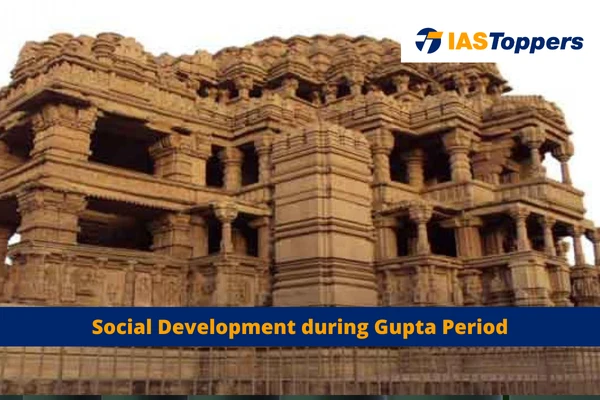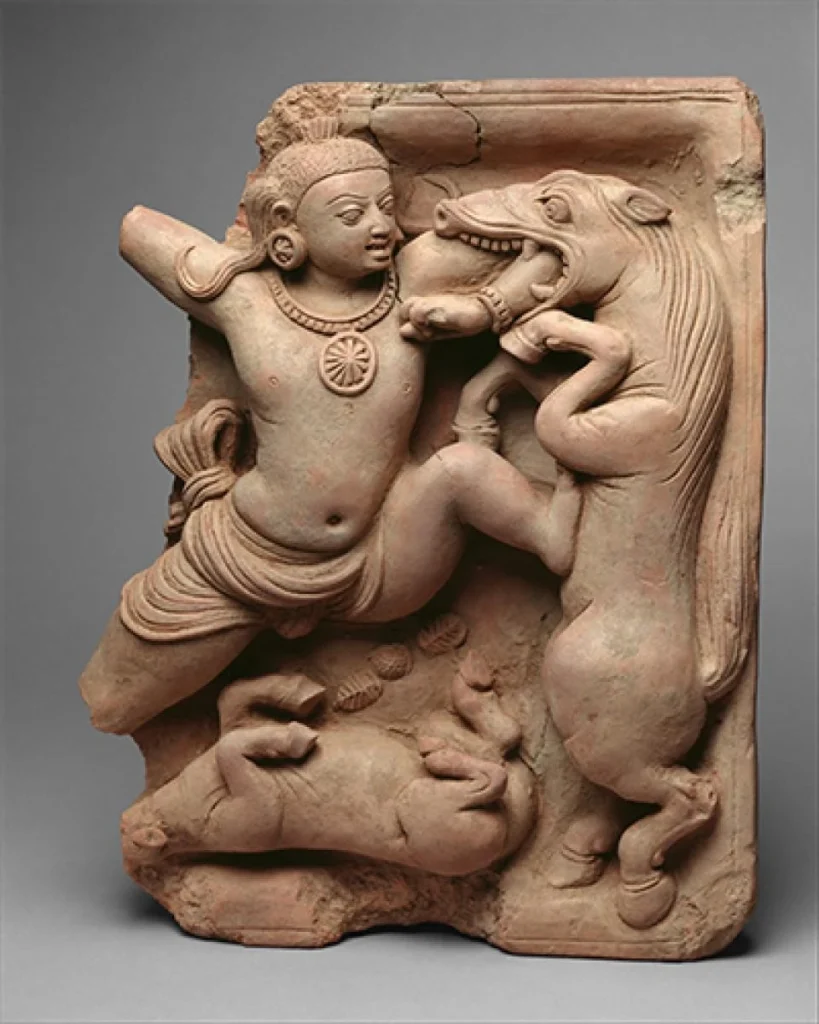The Gupta Period, often hailed as the “Golden Age” of ancient India, spanned from approximately 320 to 550 CE. This era is renowned for social development are equally profound and reflective of the era’s enduring influence on Indian society. In this article, you will learn about caste system during the gupta period, conditions of women in the gupta society, other aspects of society, etc.
This article will provide key insights for GS Paper-I Indian History of UPSC IAS Exam.
Table of Content
- Caste system during the Gupta period
- Conditions of Women in the Gupta society
- Other aspects of society
- Trade at the time of the Gupta Empire
- Conclusion
- Frequently Asked Questions
- Reference
Caste system during the Gupta period:
- During the Gupta period, the ancient four-fold varna system consisting of Brahmins, Kshatriyas, Vaishyas, and Shudras were strengthened.
- Initially, the caste system was more flexible, where Brahmins can pursue professions beyond priesthood, and some Kshatriyas can engage in trade.
- Slowly, Brahmins gained more influence over Indian society.
- The Guptas were originally Vaishyas, who were later regarded as kshatriyas by the Brahmanas.
- This led to the accumulation of wealth for the brahmanas through land grants, various privileges as outlined in the Narada Smriti.
- Brahmins emphasized ritual purity, including discouraging overseas travel and trade to avoid contact with foreigners.
- Foreigners were considered spiritually polluting due to their exclusion from the castesystem.
- New castes were developed in order to assimilate foreigners in the region.
- Foreigners were often assimilated as conquerors to gain kshatriya status.
- The Brahmins were granted considerable power and wealth.
- Indian caste groups had begun practicing endogamy during the Gupta period, and stopped the practice to intermarry.
- At the lower rung of society, the outcastes because of ritual purity were forced to live outside of the city walls.
- The untouchables, particularly chandalas, faced increased discrimination and social exclusion.
- The status of Shudras (peasants) had improved slightly as they were considered within the bounds of the caste system.
- The Shudras can take part in certain rituals and worship deities like Krishna.
- The absorption of tribal people into society, through land grants, resulted in the creation of numerous sub-castes.
- This hierarchy led to hereditary sub-castes within the varna system.
Conditions of Women in the Gupta society
- The Gupta society became more patriarchal, elevating the position of senior males as heads of households, while women experienced a decline in status.
- Their representation in village and district councils decreased, and the practice of Sati (widow self-immolation) had increased.
- Despite these, there was a surge in the worship of the Mother Goddess and the idealization of women in literature.
- Women from lower varnas enjoyed more freedom and opportunities to earn a livelihood.
- However, women from higher varnas were subjected to patriarchal norms, with limited access to independent livelihoods.
- The concept of stridhana had emerged during this period.
- Stridhana were the gifts received by the bride as her property, but inheritance of landed properties was denied to daughters.
- Widow remarriage and niyoga were permitted for shudras, but not for higher varnas during Gupta and pre-Gupta times.
Other aspects of society:
- The cows were regarded as a sacred animal.
- The vegetarianism became more widespread due to Brahminic influence.
- Even though most of India’s population lived in farming villages, the Gupta era also witnessed the growth of large cities.
- Some of the major cities included the capital of Pataliputra (now Patna).
- Pataliputra was mentioned by the Chinese traveller Faxian.
- The city had magnificent palaces, temples, and Buddhist monasteries, along with free hospitals and charitable institutions for the poor funded by affluent citizens.
Trade at the time of the Gupta Empire:
- There was the decrease in the interest rate on trading voyages, dropping from 240% per voyage in earlier times to a mere 20%.
- This showcased the increased confidence in such voyages and the higher number of journeys that allowed risks to be distributed more effectively.
- Indian merchants and seamen had controlled the Indian Ocean trade routes by establishing trading connections with other empires.
- Indian merchants had connection with the Sasanian empire of Persia and the Byzantine empire in the west, and South East Asia and China in the east.
- The State reaped benefits from the revenues generated through custom duties at ports such as Broach (now Bharuch) and Sopara.
- The Gupta rulers developed various measures, including the provision of rest houses for travelers along the highways, the construction of secure docks, and the establishment of lighthouses at ports.
Conclusion
The Gupta period, often hailed as the “Golden Age” of India, marked a significant epoch in the socio-cultural landscape of the country. This era witnessed profound advancements in various fields such as literature, science, art, and religion, which collectively fostered a harmonious and enlightened society. The period was characterized by increased patronage of the arts and education by the Gupta rulers, which led to the flourishing of classical Sanskrit literature and the establishment of prestigious educational institutions like Nalanda. In terms of social structure, although the caste system was more pronounced, there was a notable increase in social mobility compared to earlier periods, facilitated by the expansion of guilds and urban centers.
In conclusion, the social development during the Gupta period was integral in shaping the cultural heritage of India, reflecting a blend of artistic and intellectual achievements that not only enriched its contemporary society but also laid the foundational ethos for future generations. The Gupta era, therefore, stands as a testament to the rich and diverse social fabric of ancient India, highlighting a period of cultural renaissance and intellectual pursuit that continued to influence Indian society long after its decline.
Ref:Source-1
| Other Articles in History & Culture | |
| Kakatiya Dynasty | Carnatic Music |
| Bharatnatyam | Post Mauryan Art and Architecture |
| Mudras of Buddha | Mural Paintings & Cave Paintings in India |
FAQs (frequently asked questions)
What was the social life of people during the Gupta period?
During the Gupta period, the caste system became rigid. Brahmins occupied the top ladder of society, practice of untouchability had slowly begun during this period. Fahien mentions that Chandalas were segregated from society.
What was the socio economic development during the Gupta period?
The Gupta Empire’s mainstay was agriculture and the Gupta economy thrived by concentrating on agriculture.



